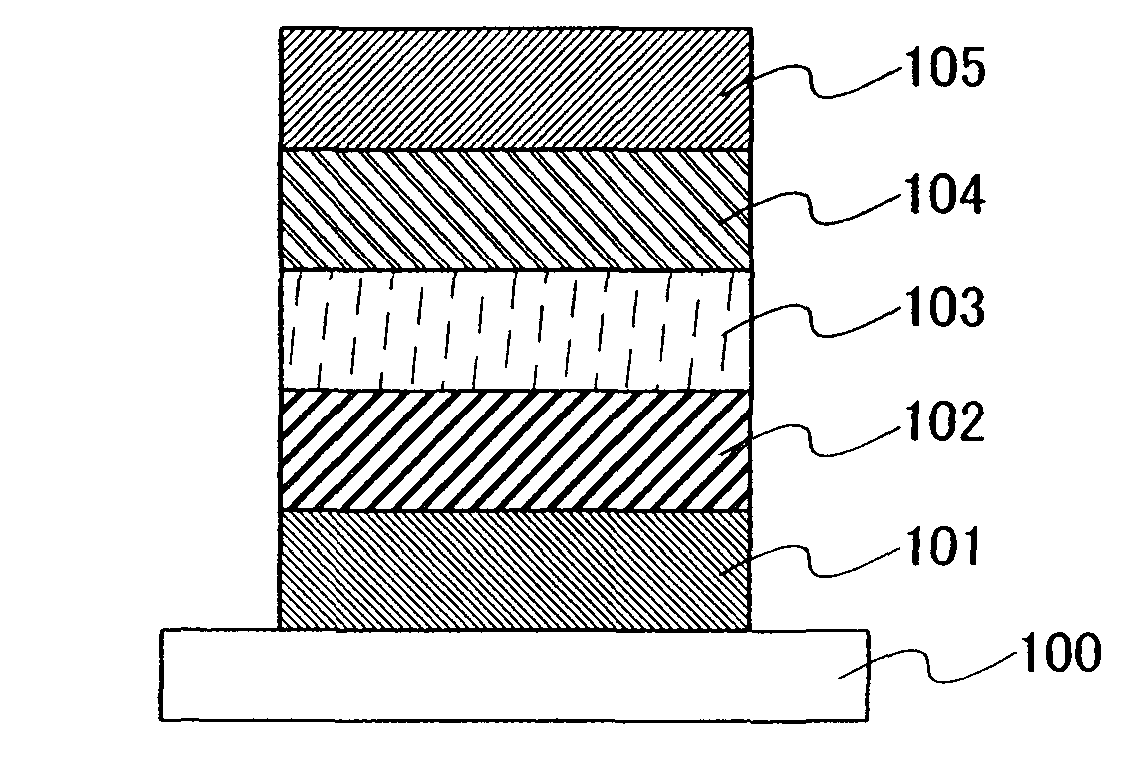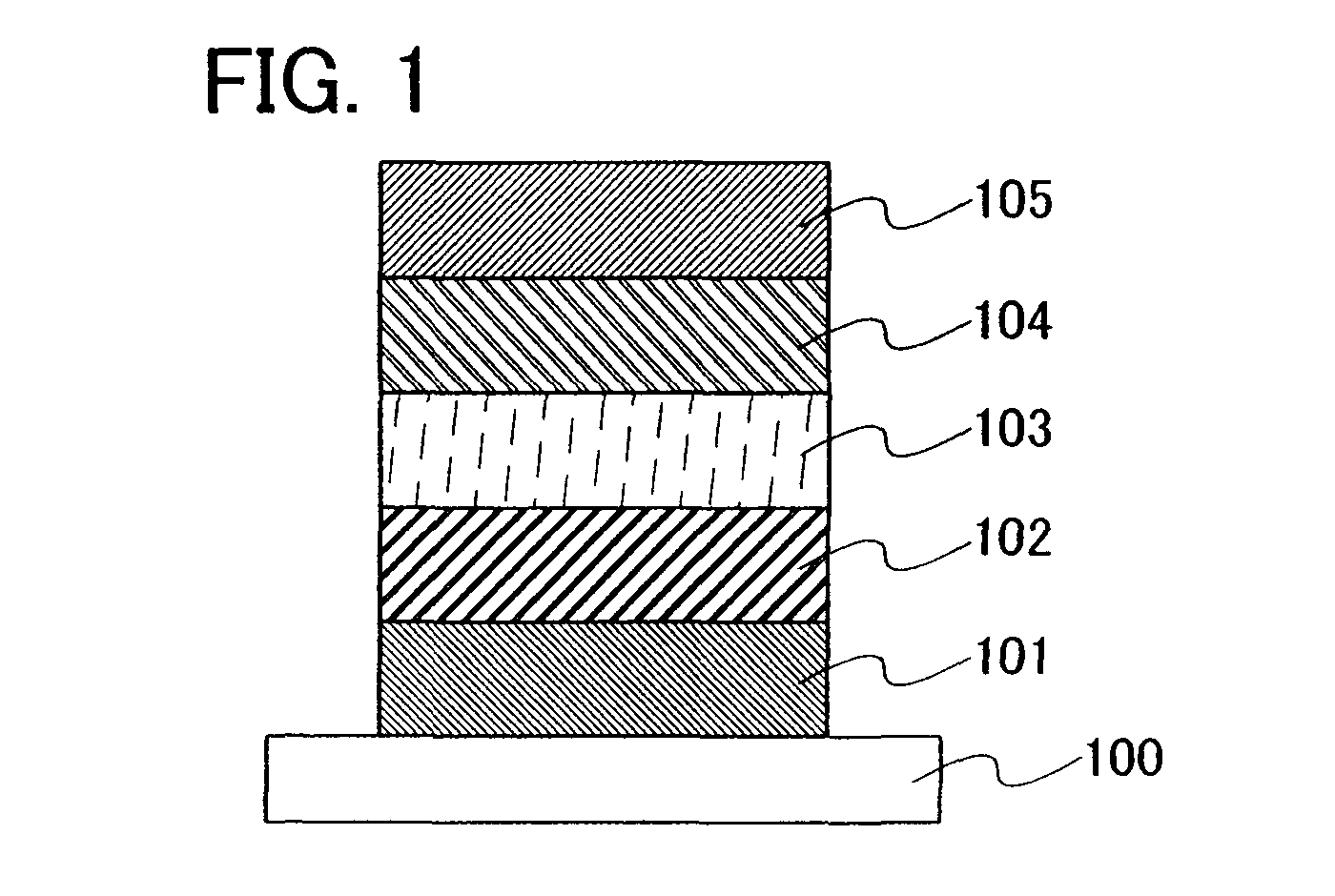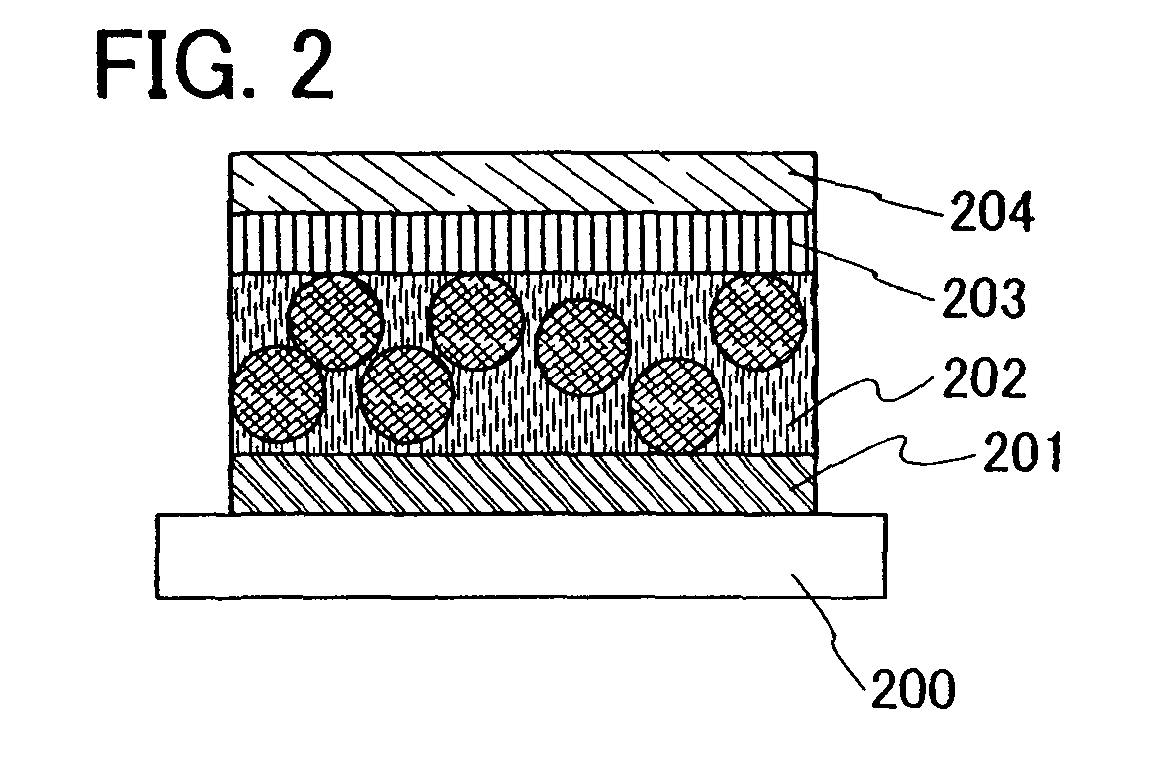Light emitting material, light emitting element, light emitting device and electronic device
a technology of light emitting elements and light emitting materials, applied in the field of light emitting materials, can solve the problems of large electric power consumption and difficulty in applying it to small and medium-sized displays, and achieve the effect of low cost and reduced power consumption
- Summary
- Abstract
- Description
- Claims
- Application Information
AI Technical Summary
Benefits of technology
Problems solved by technology
Method used
Image
Examples
embodiment mode 1
[0034]Embodiment Mode 1 will describe a light emitting material according to the present invention.
[0035]A light emitting material of the present invention includes at least zinc (Zn), gallium (Ga), manganese (Mn), and sulfur (S).
[0036]As a formation method of the light emitting material, various methods, such as a solid-phase method or a liquid-phase method (for example, a coprecipitation method) can be used. A liquid-phase method such as a spray pyrolysis method, a double decomposition method, a method employing a pyrolytic reaction of a precursor, a reverse micelle method, a method in which one or more of the above methods and high-temperature baking are combined, or a freeze-drying method can be used.
[0037]In the solid-phase method, synthesis is conducted by a solid-phase reaction. Elements to be reacted or compounds including elements to be reacted are weighed, mixed in a mortar, and baked by being heated in an electric furnace. The baking temperature is preferably 700 to 1500°...
embodiment mode 2
[0048]Embodiment Mode 2 will describe a thin-film type light emitting element according to the present invention with reference to FIG. 1.
[0049]The light emitting element described in this embodiment mode has an element structure including, over a substrate 100, a first electrode 101 and a second electrode 105, a first insulating layer 102 and a second insulating layer 104 in contact with the electrodes, and a light emitting layer 103 between the first insulating layer 102 and the second insulating layer 104. The light emitting element described in this embodiment mode emits light from the light emitting layer 103 by voltage application between the first electrode 101 and the second electrode 105 and can be operated by either DC drive or AC drive.
[0050]The substrate 100 is used as a support of the light emitting element. For the substrate 100, glass, plastic, or the like can be used, for example. Note that another material may be used as long as it functions as a support of the ligh...
embodiment mode 3
[0056]Embodiment Mode 3 will describe a dispersion type light emitting element according to the present invention with reference to FIG. 2.
[0057]The light emitting element shown in this embodiment mode has an element structure in which a first electrode 201, a second electrode 204, an insulating layer 203 in contact with the second electrode, and a light emitting layer 202 between the first electrode 201 and the insulating layer 203 are provided over a substrate 200. The light emitting element described in this embodiment mode emits light from the light emitting layer 202 by voltage application between the first electrode 201 and the second electrode 204 and can be operated by either DC drive or AC drive.
[0058]The light emitting layer 202 is a film in which particles of the light emitting material shown in Embodiment Mode 1 are dispersed in a binder. The binder is a substance used for fixing the particles of the light emitting material in a dispersed state and for keeping a shape as...
PUM
| Property | Measurement | Unit |
|---|---|---|
| voltage | aaaaa | aaaaa |
| drive voltage | aaaaa | aaaaa |
| temperature | aaaaa | aaaaa |
Abstract
Description
Claims
Application Information
 Login to View More
Login to View More - R&D
- Intellectual Property
- Life Sciences
- Materials
- Tech Scout
- Unparalleled Data Quality
- Higher Quality Content
- 60% Fewer Hallucinations
Browse by: Latest US Patents, China's latest patents, Technical Efficacy Thesaurus, Application Domain, Technology Topic, Popular Technical Reports.
© 2025 PatSnap. All rights reserved.Legal|Privacy policy|Modern Slavery Act Transparency Statement|Sitemap|About US| Contact US: help@patsnap.com



